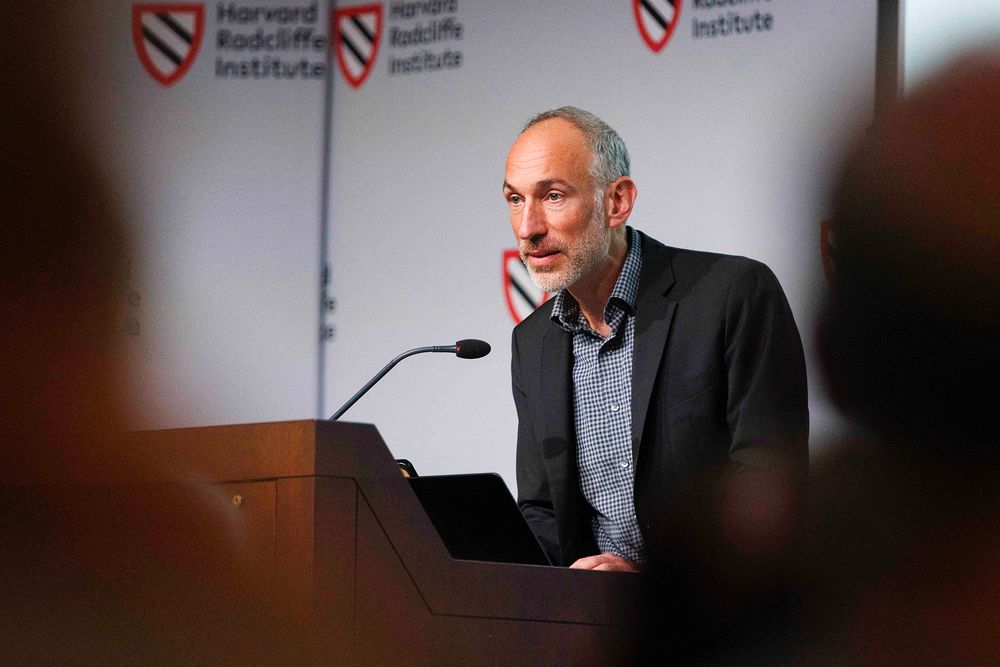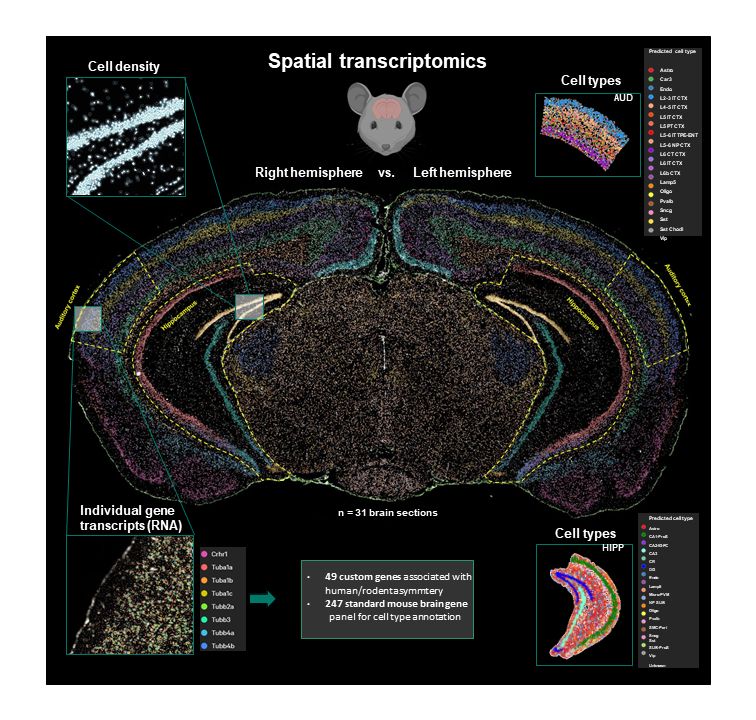
I wrote a little bit about the "missing heritability" question and several recent studies that have brought it to a close. A short 🧵
21.11.2025 22:33 — 👍 349 🔁 170 💬 14 📌 21@jsamelink.bsky.social
PhD candidate Computational neurogenetics @mpi-nl.bsky.social | EiC MPI TalkLing | #SciComm | #neuroimaging | #genomics | #language | #stats | #ML | #scienceblog | swim-bike-run | dad

I wrote a little bit about the "missing heritability" question and several recent studies that have brought it to a close. A short 🧵
21.11.2025 22:33 — 👍 349 🔁 170 💬 14 📌 21Super proud of this fabulous team for challenging old comparative frameworks and rethinking what makes language language.
Read more in the thread below 👇 or here 📖😊: www.cell.com/trends/cogni...

Origins of language, one of humanity’s most distinctive traits, may be best explained as a unique convergence of multiple capacities each with its own evolutionary history, involving intertwined roles of biology & culture. This framing can expand research horizons. A 🧵 on our @science.org paper.🧪1/n
23.11.2025 11:52 — 👍 201 🔁 86 💬 6 📌 9
If you're interested in how advances in human genomics are transforming our understanding of the biology of spoken & written language abilities, please do check out my new peer-reviewed "tutorial" article, just published.
🗣️🧬🧪
[Will also make a Bsky explainer 🧵 on it next week when I get some time🙂.]
Better schools can compensate for dispositions
29.10.2025 07:58 — 👍 12 🔁 4 💬 0 📌 0
As the single most important news story this year, I can't wait to see the detailed and central coverage this will get in every media outlet we have
28.10.2025 01:00 — 👍 2067 🔁 905 💬 43 📌 68OPEN PHD POSITION - Come join our group! The IMPRS at @mpi-nl.bsky.social is offering an PhD position on modelling structured meaning in the brain, supervised by me and Helen De Hoop at the Centre for Language Studies in the @dondersinst.bsky.social -
www.mpi.nl/imprs-phd-fe... #NeuroJobs #cogsci
Honestly, highly recommended! Very nice and diverse environment, excellent facilities!
22.10.2025 17:43 — 👍 2 🔁 0 💬 0 📌 0
Photograph of researchers at their benches in the custom-built molecular biology labs of the Max Planck Institute in Nijmegen, with green trees of the forest outside visible through large windows in the background.
Come join us for a 4-year PhD on effects of rare gene disruptions involved in speech disorder, investigated in human neuronal models (via gene-editing, tissue culture, brain organoids, high-res microscopy, transcriptomics, epigenomics).
More info: www.mpi.nl/imprs-phd-fe...
#AcademicJobs #PhDJobs
🧬🧪

Philosopher of mind John Searle has left the building
dailynous.com/2025/09/28/j...
He was best known for his Chinese Room Argument on artificial intelligence and wide-ranging work on the mind and consciousness
Ode to the original language model, or:
Give me literally Anything* instead of Large Language Models (LLMs)
*(no predictive coding either!)
By Lady Byronadrea LLMartin 1/n

At points of our evolutionary history multiple Homo lineages coexisted. Insights into these depend mainly on rare fossil crania, damaged & deformed by age. Removing such distortions, new reconstructions of a 1-million-yr-old cranium from China suggest a surprising mix of primitive & derived traits:🧪
25.09.2025 19:06 — 👍 20 🔁 10 💬 1 📌 1
New paper alert! Systematic epidemiological analyses of up to 39,000 people illuminate biological/clinical links between impaired musical rhythm abilities & disorders affecting speech-language development. International collaboration led by @drsrishtin.bsky.social, out in @natcomms.nature.com. 👇🧪
25.09.2025 18:17 — 👍 36 🔁 15 💬 1 📌 2
Massive sibling regression study finds that human traits are largely environmentally driven (average heritability = 0.3)
20.09.2025 18:19 — 👍 104 🔁 43 💬 2 📌 2
“The big perspective change from ancient DNA study is that people living today are almost never the descendants of the people in the same place thousands of years before”
news.harvard.edu/gazette/stor...

A project many years in the process, we’re pleased to present our work on multi-ancestry meta-analysis across a boatload of traits in the UK Biobank: www.nature.com/articles/s41...
18.09.2025 17:25 — 👍 63 🔁 25 💬 1 📌 0Taps side of head… can’t get bored if I never truly specialize!
17.09.2025 09:31 — 👍 42 🔁 3 💬 0 📌 2I've only read the abstract and I already know this paper is so very correct 👀
14.09.2025 03:06 — 👍 73 🔁 22 💬 6 📌 0
Another social cerebellar dream team effort: Cerebellar growth is associated with domain-specific cerebral maturation and socio-linguistic behavioural outcomes - thanks Katerina Manoli and co for wonderful work! Thanks also to @imprsconi.bsky.social
www.biorxiv.org/content/10.1...

New @maxplanck.de study: We looked for left-right differences of gene expression and cell-type abundances in the brains of MICE 🐭using Xenium @10xgenomics.bsky.social. Possible clues to how functional brain asymmetry is supported !! www.biorxiv.org/content/10.1... Short thread below ⬇️
12.09.2025 07:10 — 👍 35 🔁 19 💬 2 📌 0Key insights (2):
➡️ Key language connectivity genes include EPHA3, PLCE1 and INPP5A
➡️ Brain traits relate to language-related polygenic scores
➡️ We observe genetic enrichment for evolutionary relevant loci
➡️ Exome provides additional insight into brain connectivity
Key insights (1):
➡️ Gene mapping is associative in nature
➡️ Neuroimaging is an informative intermediate for language
➡️ Different brain traits both yield different genetics and converge



𝐇𝐨𝐰 𝐝𝐨 𝐰𝐞 𝐠𝐨 𝐟𝐫𝐨𝐦 𝐠𝐞𝐧𝐞𝐬 𝐭𝐨 𝐛𝐫𝐚𝐢𝐧𝐬 𝐭𝐨 𝐥𝐚𝐧𝐠𝐮𝐚𝐠𝐞?
I loved presenting today results from my #PhD at the #Sociogenomics Seminar at the University of Tartu.
Thanks to @ukuvainik.bsky.social for the invite!
Find me at poster 9 tomorrow at the #GeneForum
#language #neuroscience
Key insights⬇️

Some people call it a minefield. Others call it dangerous, even irresponsible. I call it the most promising field in life sciences.
My love letter to social science genetics: communities.springernature.com/posts/a-love...

Remember this? In the 1990s, a popular view of nanotechnology claimed that molecular gears like this, made of diamondoid carbon, were going to be the components of molecular-scale assemblers and nanobots. But that vision hasn't come to pass. My article in Aeon explores why.
aeon.co/essays/no-su...

Multivariate genome-wide association analysis of dyslexia and quantitative reading skill improves gene discovery. New paper by Hayley S. Mountford & al. With Else Eising, @profsimonfisher.bsky.social
doi.org/10.1038/s41398-025-03514-0

A comic of a Zipfian distribution where the curve looks like a dinosaur with head, body & tail
Thanks to the presentation by @anthe.sevenants.net at #SLE2025 today I now know of the Zipfian dinosaur 🦕 and shall henceforth use it in all my stats classes 🤩
29.08.2025 08:57 — 👍 35 🔁 11 💬 0 📌 1
Steve Furber powerpoint slide showing picture of Ada Lovelace and a quote: "I have my hopes, and very distinct ones too, of one day getting cerebral phenomena such that I can put them into mathematical equations--in short, a law or laws for the mutual actions of the molecules of brain. .... I hope to bequeath to the generations a calculus of the nervous system."
incredible Ada Lovelace quote highlighted in a talk by Steve Furber. She spells out the dream of computational neuroscience, 2 centuries ago. The sheer ambition 🤩
29.08.2025 09:21 — 👍 78 🔁 21 💬 1 📌 1"I find the type of thinking and writing involved in public-facing science communication joyful. It replenishes my awe and wonder. My value function is deeply driven by curiosity, both in the weeds (where individual scientific projects reside) and at a high level."
#scicomm #joy
For the EU, this should be a very urgent matter of national security. All EU member states should build on Denmark's wise strategy to phase out Microsoft products
23.08.2025 08:05 — 👍 1378 🔁 653 💬 23 📌 54